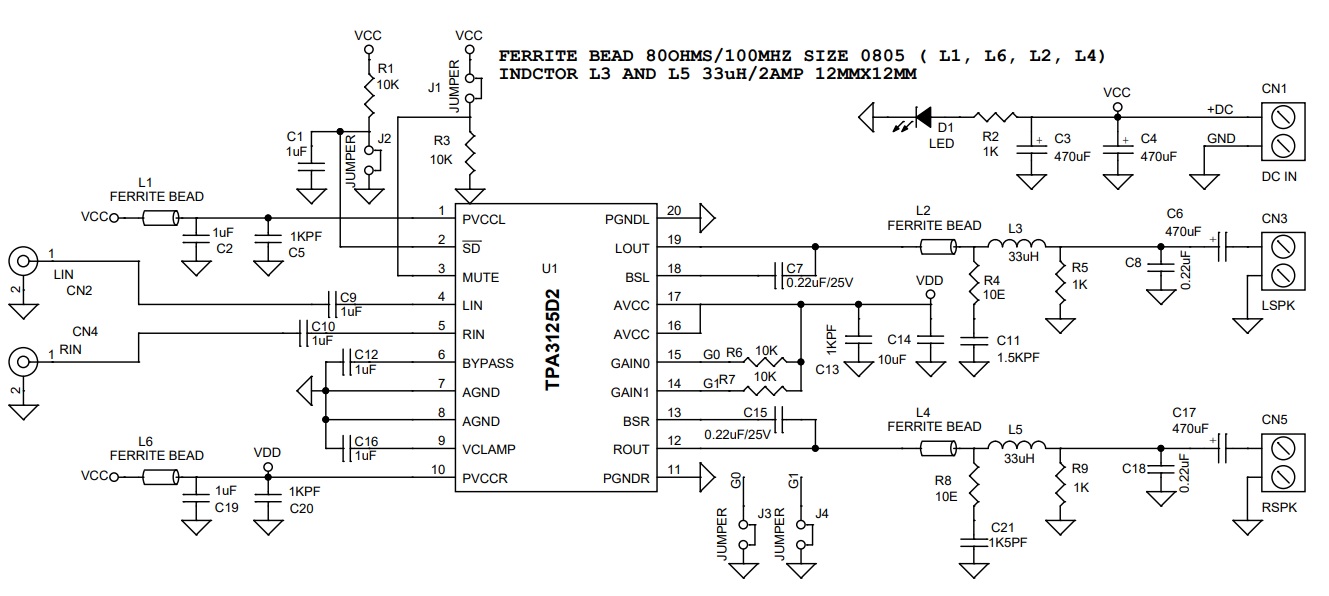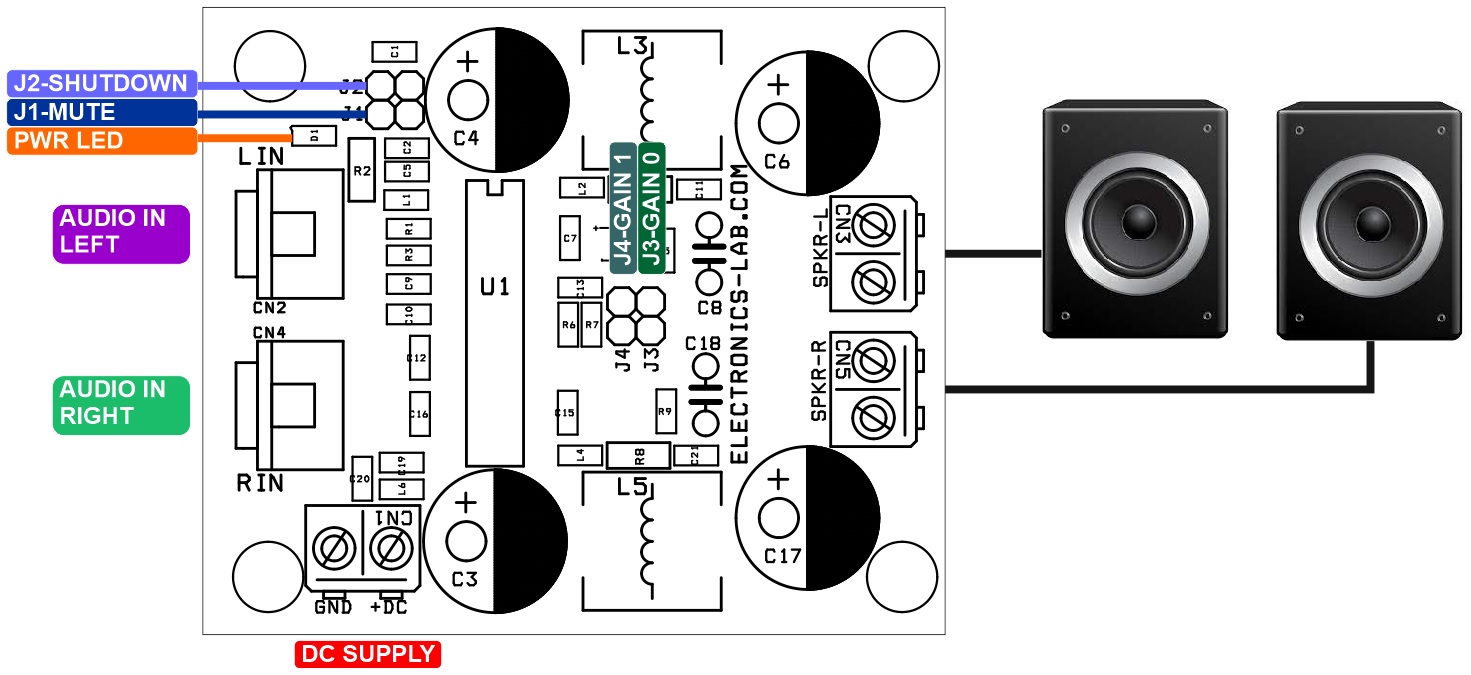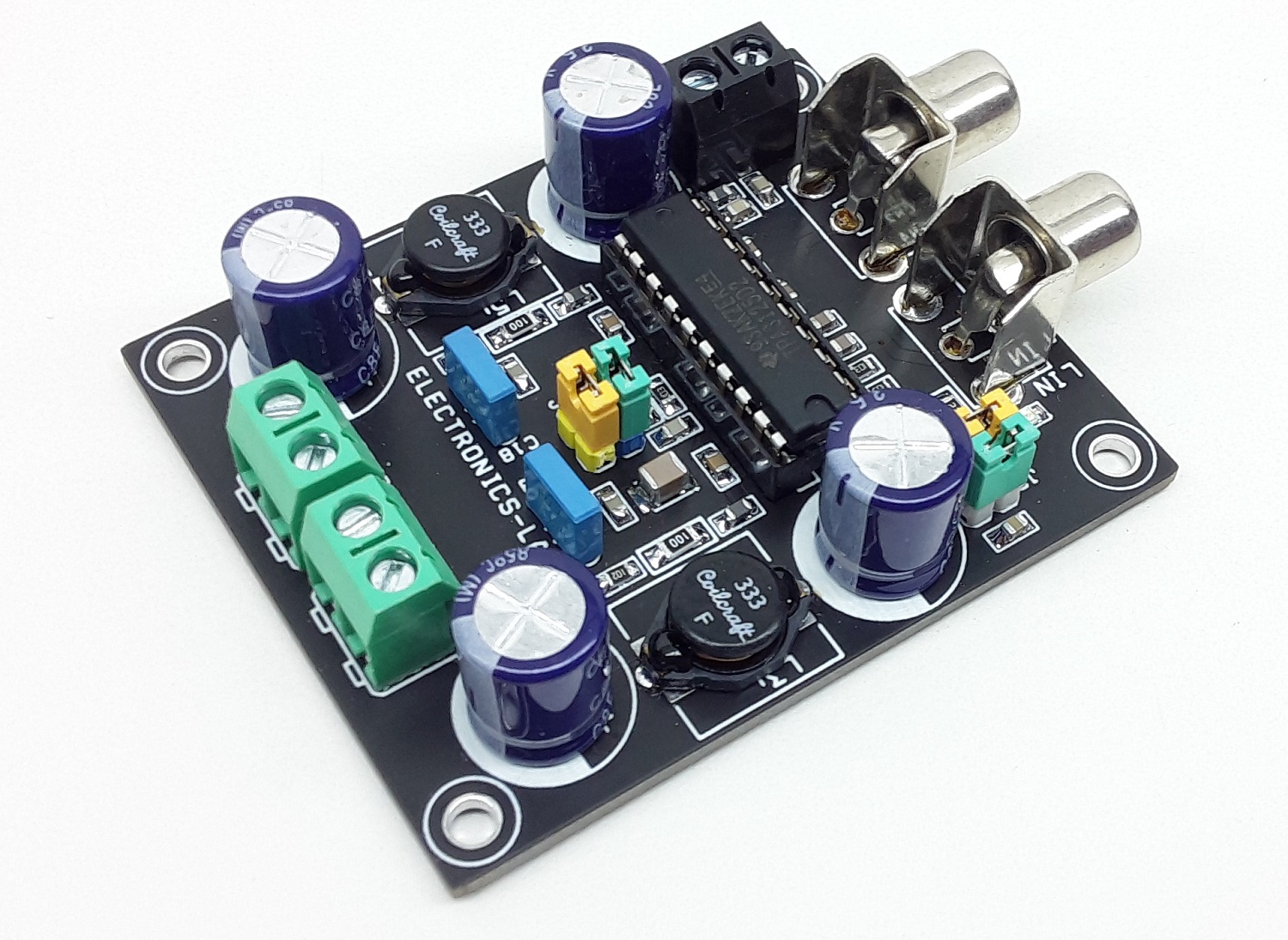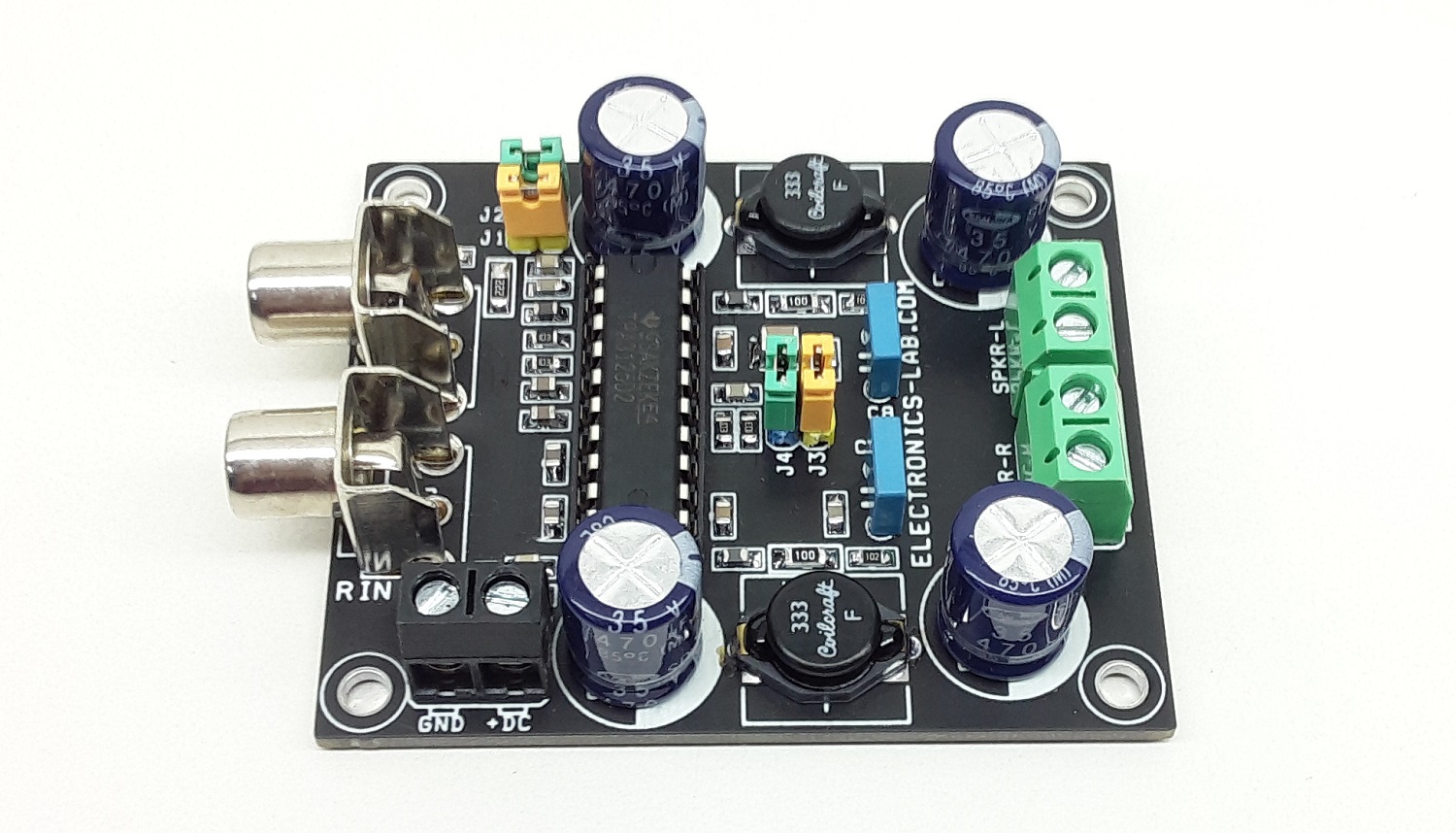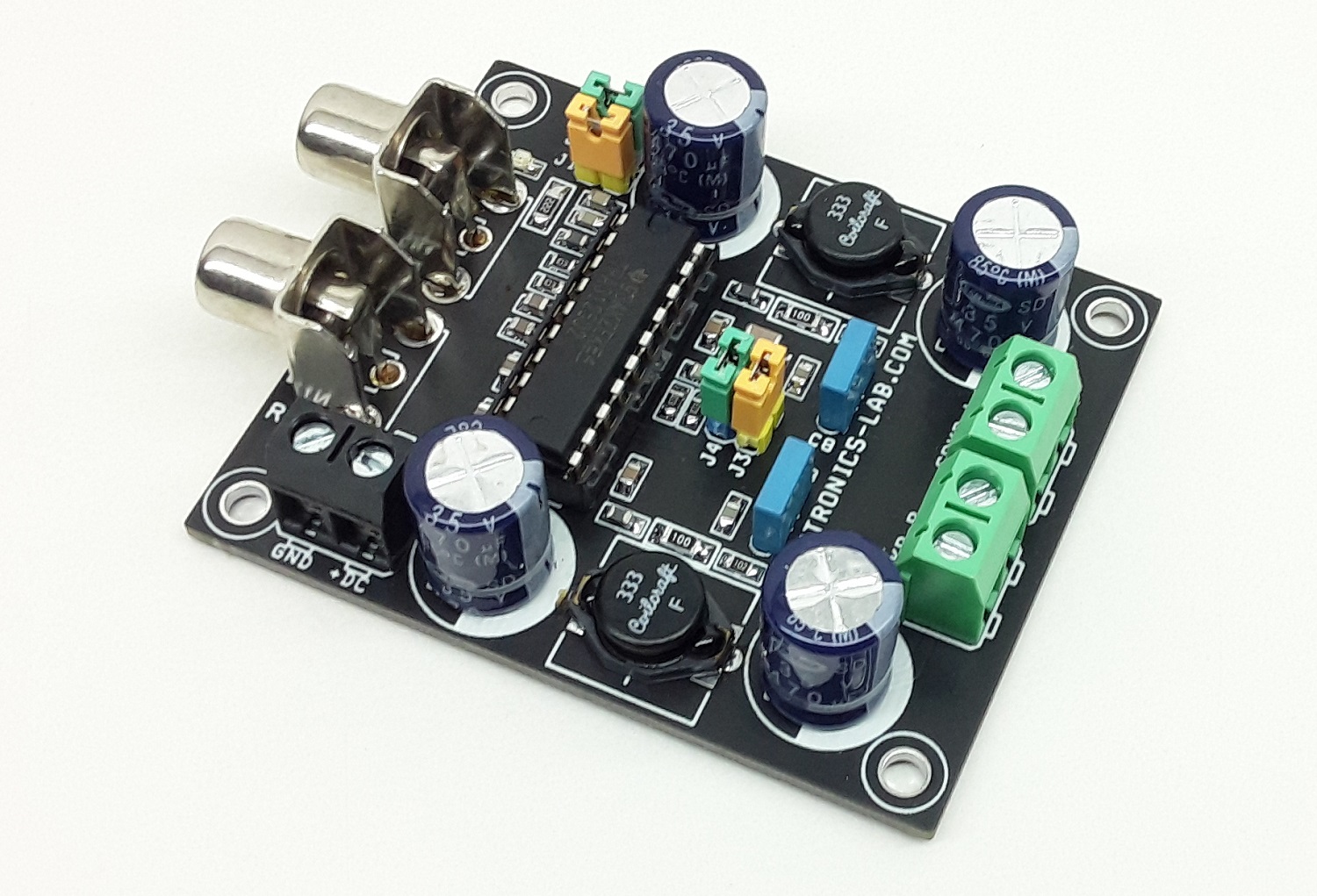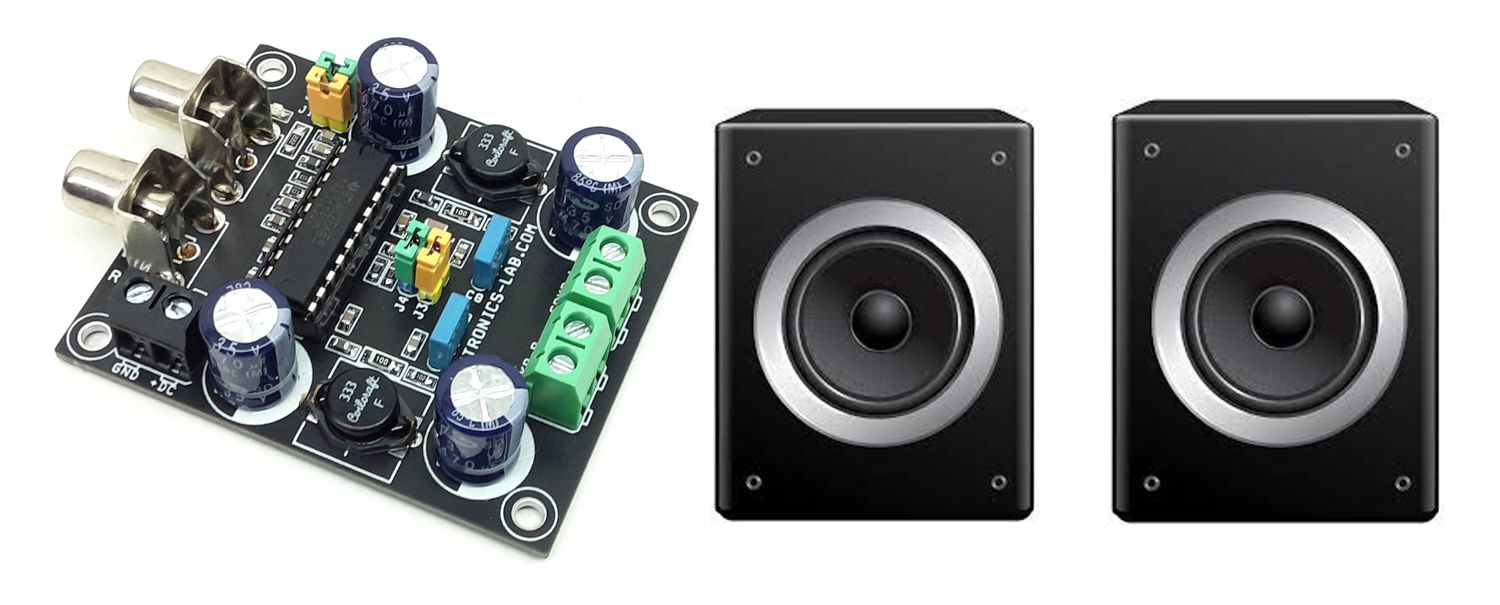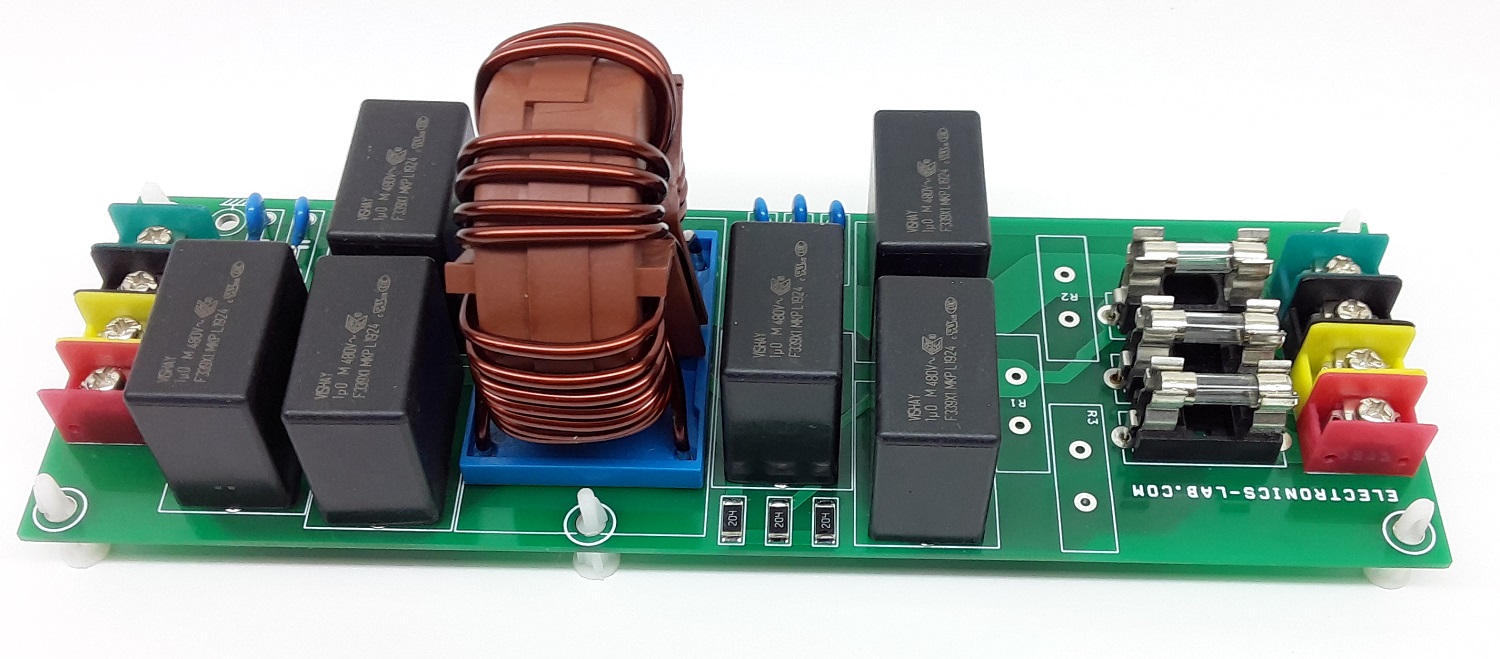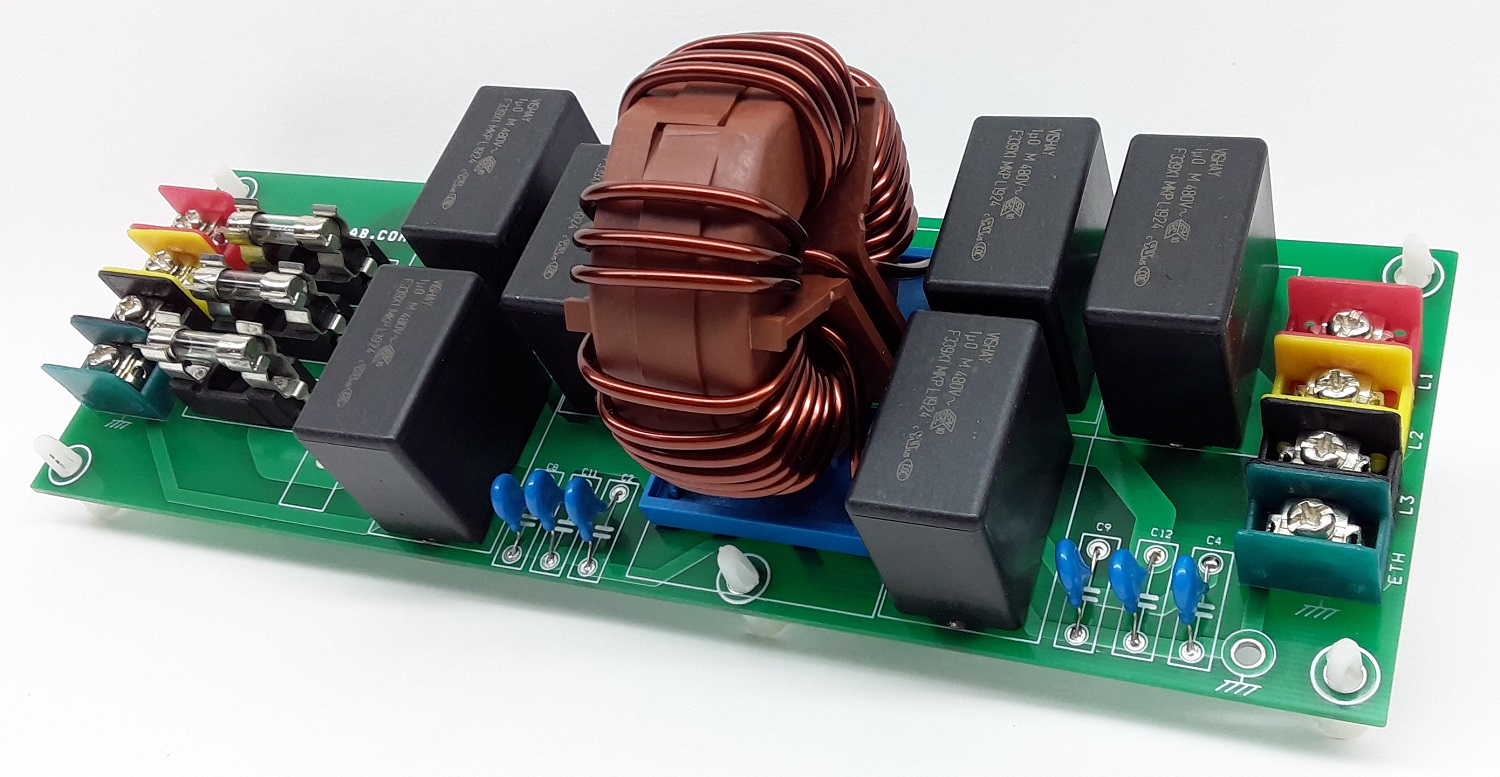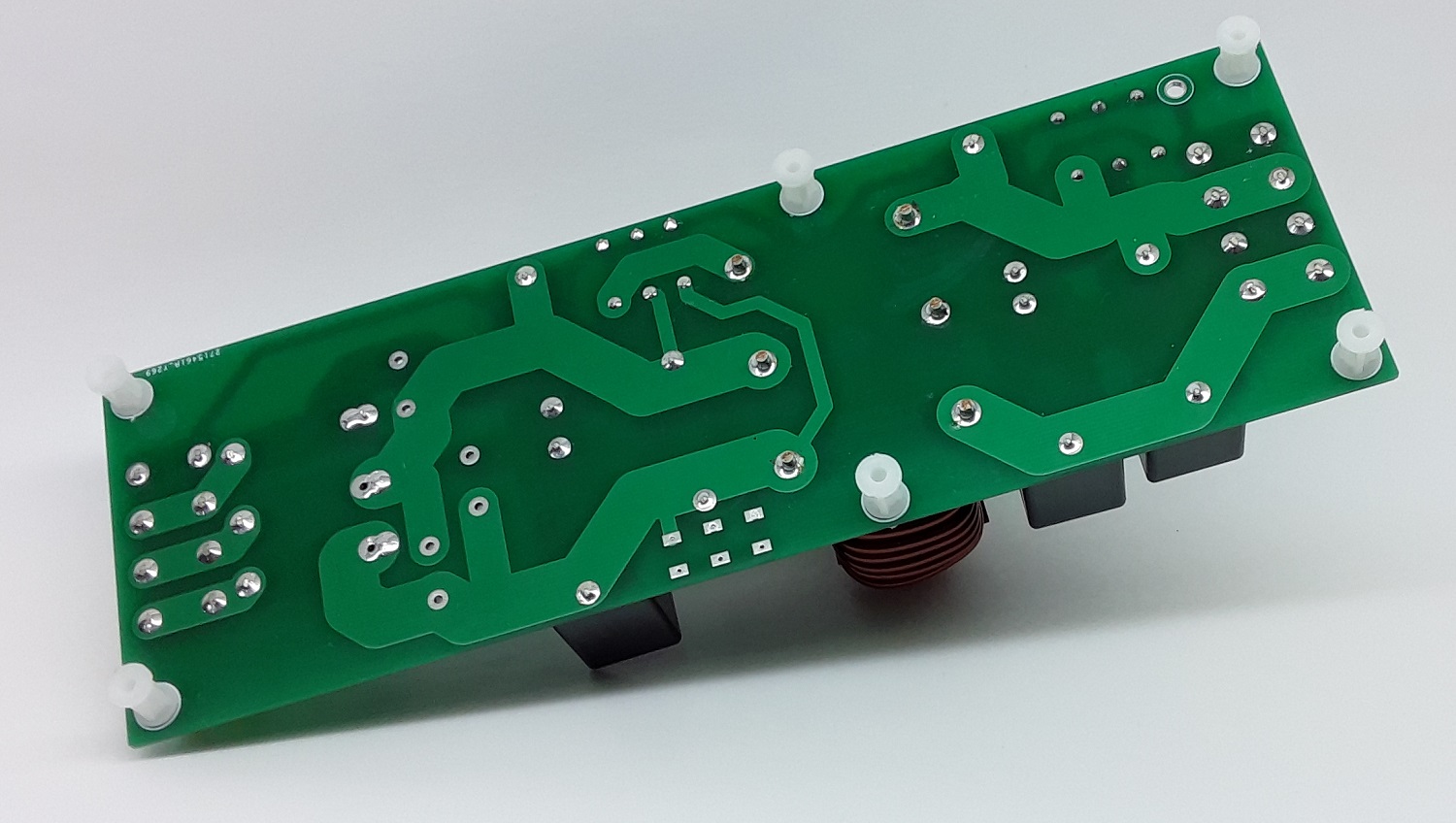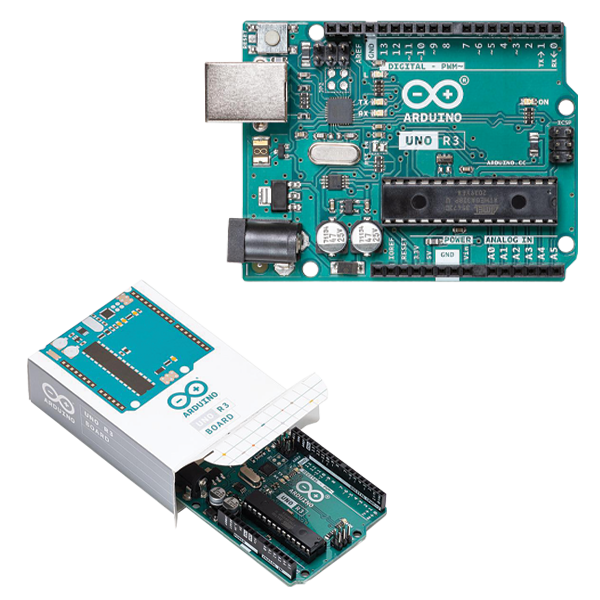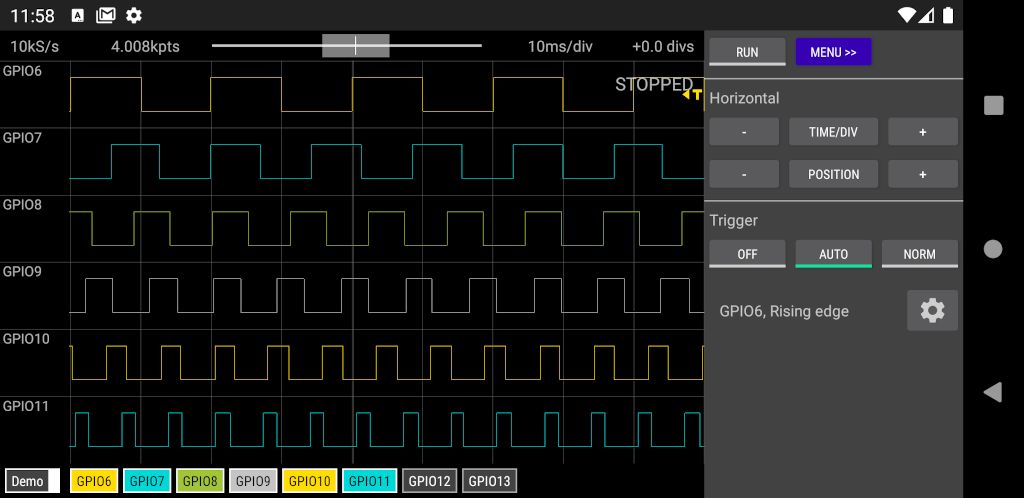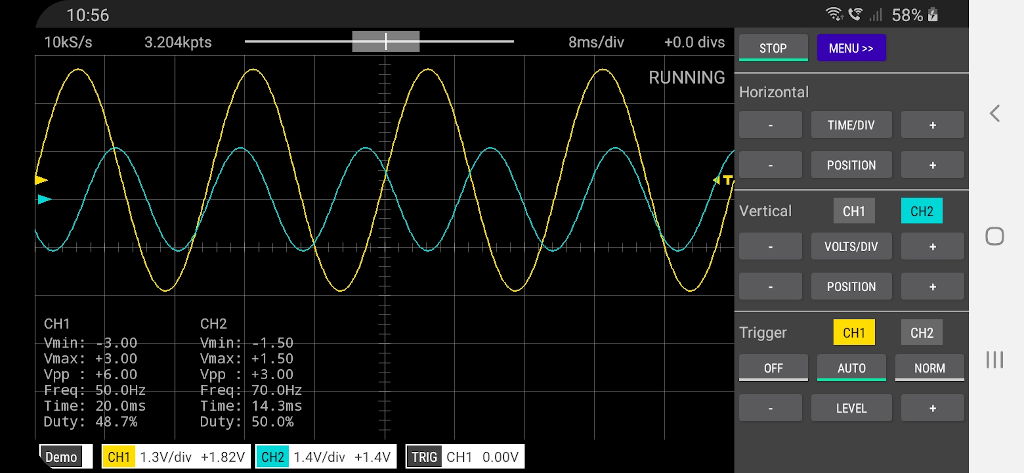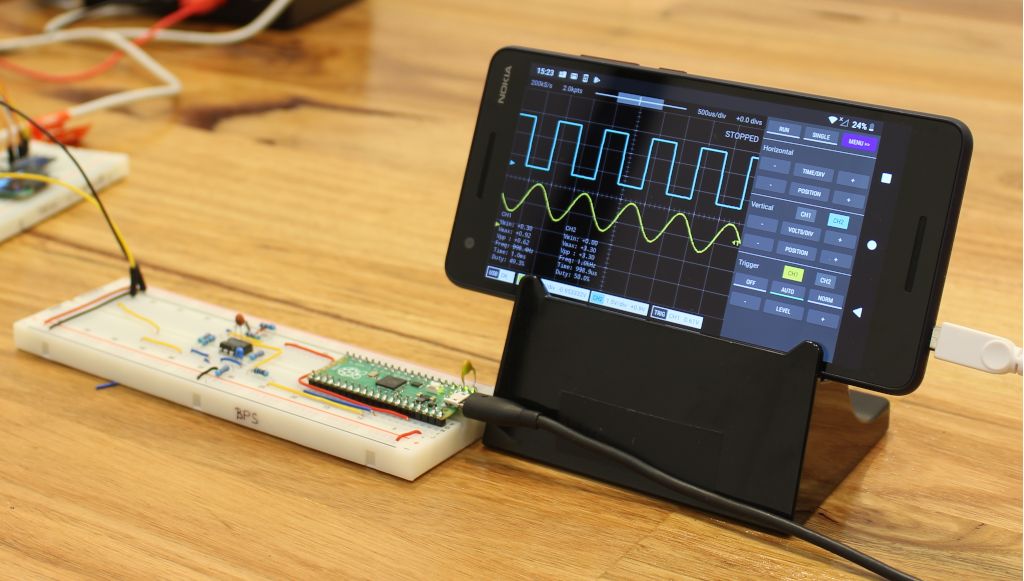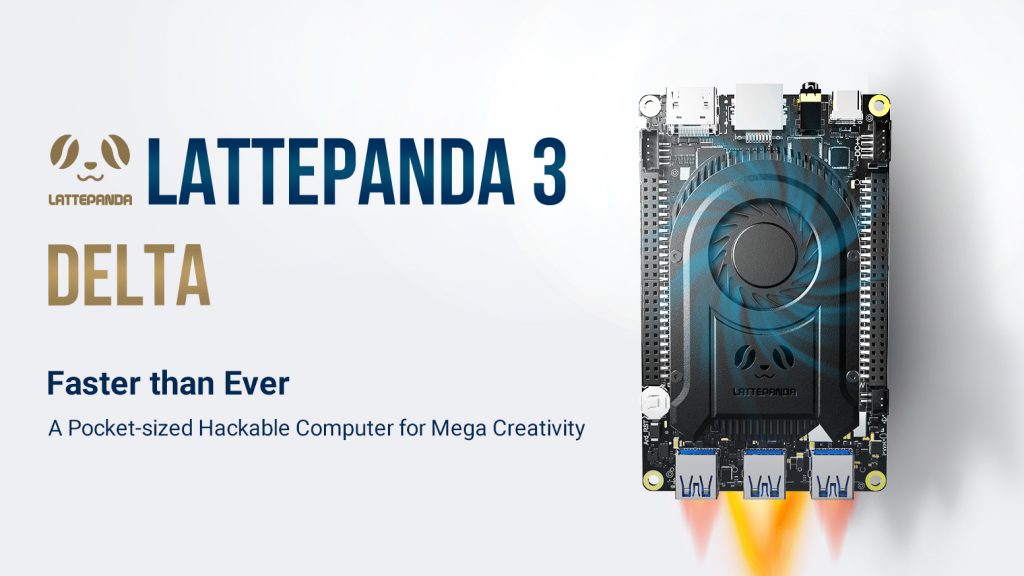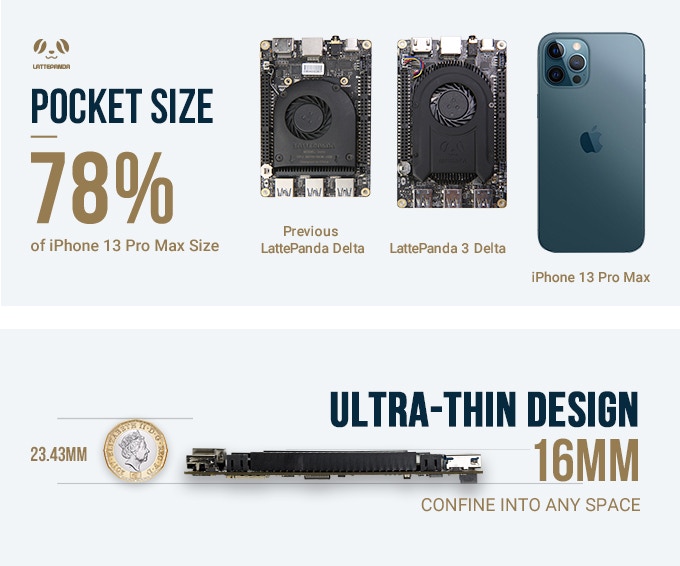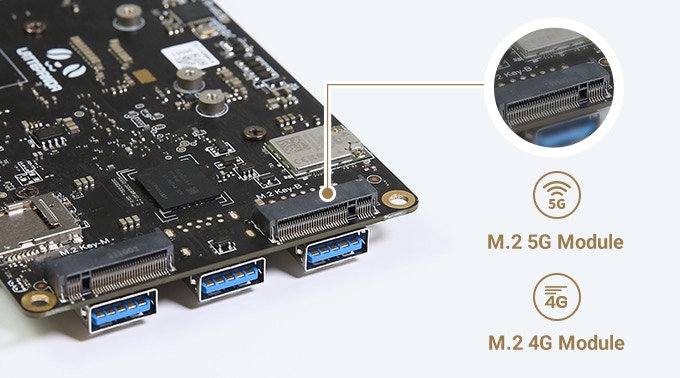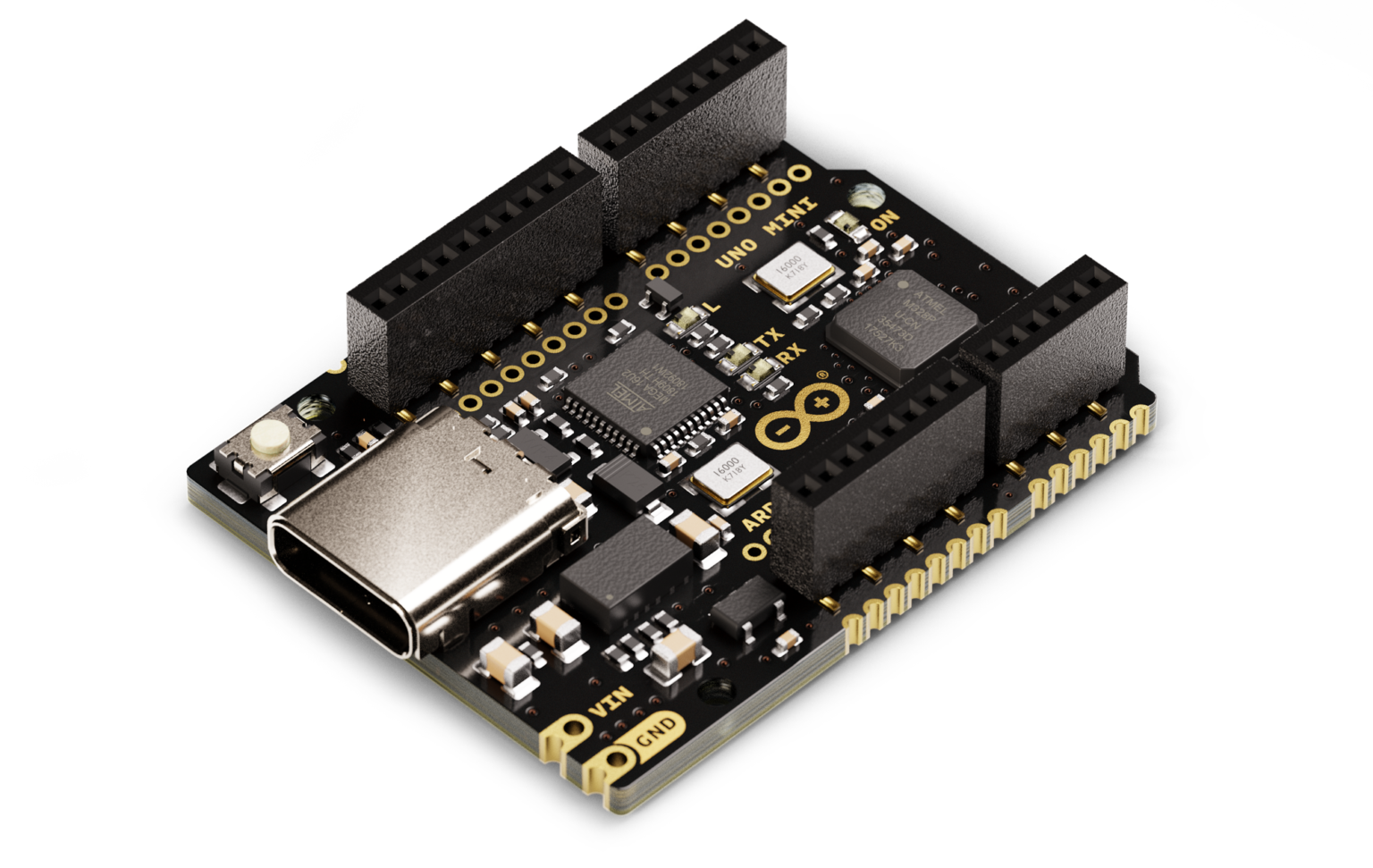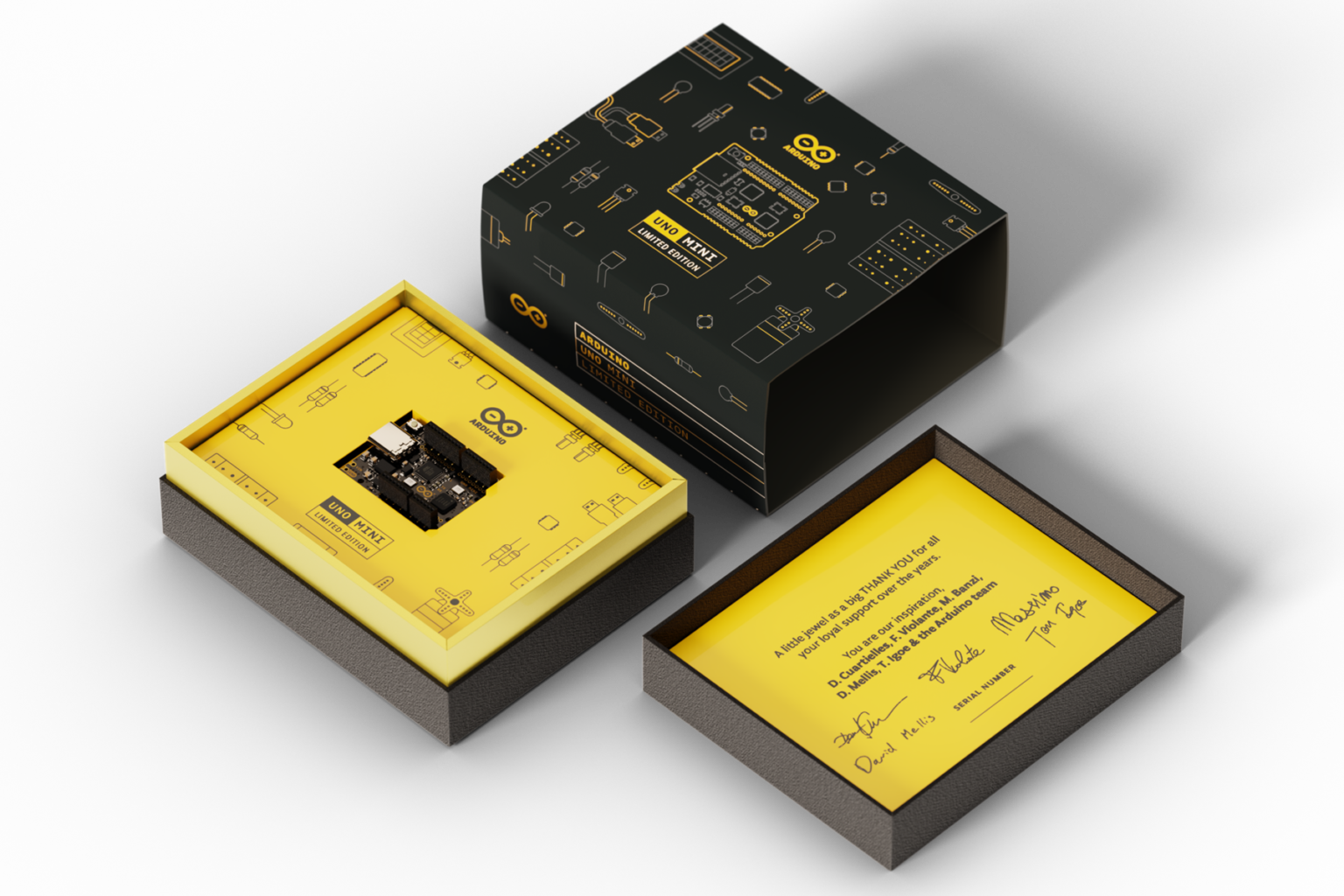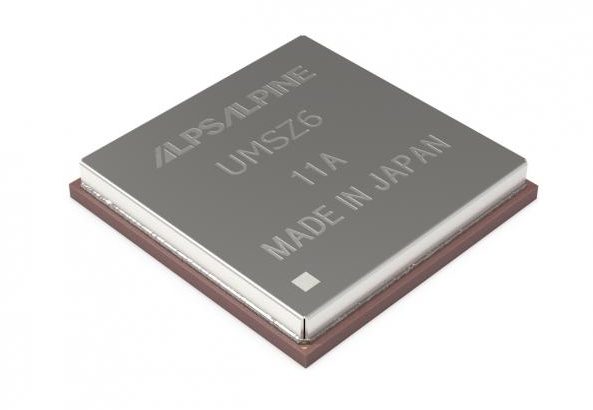This is a Class-D Stereo audio amplifier project that provides 10W stereo output. The amplifier includes Gain control using 2 x Jumpers, Mute function, and shutdown function.
RCA female connectors are provided for the audio source input, screw terminals are provided for an easy interface with speakers and power supply input. The project was built using a TPA3125D2 chip from TI.
The TPA3125D2 is a 10-W (per channel), efficient, Class-D audio power amplifier for driving stereo speakers in a single-ended configuration; or, a mono speaker in a bridge-tied-load configuration. The TPA3125D2 can drive stereo speakers as low as 4 Ω. The efficiency of the TPA3125D2 eliminates the need for an external heat sink when playing music. The gain of the amplifier is controlled by two gain select pins. The gain selections are 20, 26, 32, and 36 dB. The patented start-up and shutdown sequences minimize pop noise in the speakers without additional circuitry.
Gain Setting Jumper J3 & J4 (J3=Gain1 & J4=Gain0) OFF Denotes Jumper Removed/Open, On Denotes Jumper Closed/Installed
- Gain-1 ON + Gain-0 ON = Amplifier Gain (dB) 20
- Gain-1 ON + Gain-0 OFF = Amplifier Gain (dB) 26
- Gain-1 OFF + Gain-0 ON = Amplifier Gain (dB) 32
- Gain-1 OFF + Gain-0 OFF = Amplifier Gain (dB) 20
Input Resistance
Changing the gain setting can vary the input resistance of the amplifier from its smallest value, 9Kohms +/-20%, to the largest value, 60Kohms +/-20%.
Mute and Shutdown Function (Jumper J1-Mute & J2-Shutdown)
- Jumper J1 Open Normal Operation, J1 Closed Mute On
- Jumper J2 Open Normal Operation, J2 Closed Shutdown On
Features
- Power Supply 12V DC (Range 10V to 26V DC)
- Supply Current 3A
- Output 10W (24V DC Supply)
- Speaker 8 Ohms (Minimum Speaker Load 4 Ohms)
- 2 x Single Ended Audio Signal Input
- Jumper J1 Mute Function
- Jumper J2 Shutdown Function
- Four Selectable Gain Settings (Jumper J3 and J4)
- Thermal and Short Circuit Protection with Auto Recovery
- PCB Dimensions 52.71 x 63.82 mm
Schematic
Parts List
| NO | QNTY | REF | DESC | MANUFACTURER | SUPPLIER | PART NO |
|---|---|---|---|---|---|---|
| 1 | 1 | CN1 | 2 PIN SCREW TERMINAL PITCH 5.08MM | PHOENIX | DIGIKEY | 277-1247-ND |
| 2 | 1 | CN2 | RCA FEMALE | CUI DEVICES | DIGIKEY | CP-1405-ND |
| 3 | 1 | CN3 | 2 PIN SCREW TERMINAL PITCH 5.08MM | PHOENIX | DIGIKEY | 277-1247-ND |
| 4 | 1 | CN4 | RCA FEMALE | CUI DEVICES | DIGIKEY | CP-1405-ND |
| 5 | 1 | CN5 | 2 PIN SCREW TERMINAL PITCH 5.08MM | PHOENIX | DIGIKEY | 277-1247-ND |
| 6 | 7 | C1,C2,C9,C10, | 1uF/50V SMD SIZE 0805 | MURATA/YAGEO | DIGIKEY | |
| C12,C16,C19 | 1uF/50V SMD SIZE 0805 | MURATA/YAGEO | DIGIKEY | |||
| 7 | 4 | C3,C4,C6,C17 | 470uF/35V | NICHICOM | DIGIKEY | 493-12005-1-ND |
| 8 | 3 | C5,C13,C20 | 1KPF/50V SMD SIZE 0805 | MURATA/YAGEO | DIGIKEY | |
| 9 | 2 | C7,C15 | 0.22uF/25V SMD SIZE 0805 | MURATA/YAGEO | DIGIKEY | |
| 10 | 2 | C8,C18 | 0.22uF/63V BOX | EPCOS-TDK | DIGIKEY | 495-2492-ND |
| 11 | 1 | C11 | 1.5KPF/50V SMD SIZE 0805 | MURATA/YAGEO | DIGIKEY | |
| 12 | 1 | C14 | 10uF/50V SMD SIZE 0805 | MURATA/YAGEO | DIGIKEY | |
| 13 | 1 | C21 | 1K5PF/50V SMD SIZE 0805 | MURATA/YAGEO | DIGIKEY | |
| 14 | 1 | D1 | LED SMD SIZE 0805 | LITE ON INC | DIGIKEY | 160-1427-1-ND |
| 15 | 4 | J1,J2,J3,J4 | 2 PIN HEADER PITCH 2.54MM | WURTH | DIGIKEY | 732-5315-ND |
| 16 | 4 | L1,L2,L4,L6 | FERRITE BEAD 80OHMS/100MHZ SIZE 0805 | TDK | DIGIKEY | 445-2187-1-ND |
| 17 | 2 | L3,L5 | 33uH /2AMP | COIL CRAFT | COILCRAFT | DO3316P-333MLD |
| 18 | 4 | R1,R3,R6,R7 | 10K 5% SMD SIZE 0805 | MURATA/YAGEO | DIGIKEY | |
| 19 | 3 | R2,R5,R9 | 1K 5% SMD SIZE 0805 | MURATA/YAGEO | DIGIKEY | |
| 20 | 2 | R4,R8 | 10E 5% SMD SIZE 1206 | MURATA/YAGEO | DIGIKEY | |
| 21 | 1 | U1 | TPA3125D2 | TI | DIGIKEY | 296-24090-5-ND |
| 22 | 4 | SHUNT | SHUNT FOR JUMPERS | SULINS INC | DIGIKEY | S9001-ND |



